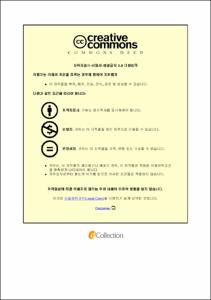A 발전회사 “위험성평가 기법” 표준화 연구
- Abstract
- Sangduk Kim
Department of Safety Engineering
Graduate School of Industry
Pukyong National University
Abstract
In 1996, the Industrial Safety and Health Act was revised, the process safety management (PSM) system for the prevention of serious industrial accidents was legislated, and the risk assessment for processes related to hazardous substances became mandatory. The scope of the risk assessment was extended by the KOSHA18001 certification system - autonomous safety and health management system in KOREA - implemented in 1999, and all the domestic work places were obliged to carry out the risk assessment in 2014. Since the power plant contains a small amount of PSM substances, such as hydrogen and ammonia, it is necessary to conduct a process risk assessment. Depending on the type of work, risk assessment is carried out in the technical field and the office field. The technical field operates and maintains the power generation facilities, and the office works to support it. "A" Power Generation Company has business sites distributed in each country. It is difficult to make a relative comparison between risk factors and risk assessment results for each workplace and each work due to the different risk assessment techniques or procedures used for each workplace. Therefore, a standardized risk assessment system that can be applied to all work places is needed to prevent accidents and disasters. A standard system that can be easily accessed and utilized by all employees is required through the introduction of techniques appropriate to the type of work such as facility risk, job risk, and policy system risk.
In this study, the problems and improvements of the power plant are found through the interviews of the safety personnel working at the "A" Power Generation Company and the case analysis of the excellent safety management organizations. In addition, by using the element-specific matrix technique, the risk assessment differences and improvement points of each workplace are derived. Through the SWOT method, eight tasks are selected: standardization of risk assessment techniques, simplification of risk assessment tasks, strengthening safety monitoring using Big data, and strengthening management of safety activity performance targets (Key Performance Indicators, KPIs). These eight tasks cover the overall improvement of the risk assessment task. Risk assessment methods, risk estimation, and standardization of risk criteria were selected as priority tasks through a preliminary questionnaire for safety personnel. Afterwards, the questionnaires were conducted for employees in charge of risk assessment at each workplace. Based on the results, the risk assessment method, the risk estimation standard and the standardization method for the risk determination standard suitable for the "A" Power Generation Company were derived in the Guideline for the Risk Assessment of the Workplace.
Key Words : thermal power plant, risk assessment, standardization.
- Issued Date
- 2018
- Awarded Date
- 2018. 8
- Type
- Dissertation
- Publisher
- 부경대학교
- Affiliation
- 부경대학교 산업대학원
- Department
- 산업대학원 안전공학과
- Advisor
- 장성록
- Table Of Contents
- 제 1 장 서 론 1
1.1. 연구 배경 1
1.2. 연구 필요성 및 목적 2
제 2 장 이론적 고찰 3
2.1. 국내 위험성평가 제도 3
2.2. 국외 위험성평가 제도 5
2.3. 위험성평가 기법의 종류 13
2.4. 기타 위험성평가 방법 21
제 3 장 연구 대상 및 방법 25
3.1 연구 대상 25
3.2 연구 방법 26
제 4 장 연구결과 28
4.1 A 발전회사 안전담당자 인터뷰 28
4.2 A 발전회사 위험성평가 업무수행 현황 29
4.2.1 업무형태별 위험성평가 기법 적용현황 31
4.2.2 위험성 추정 방법 34
4.2.3 위험성 결정 방법 35
4.3 타 기업의 위험성평가 우수사례 분석 39
4.4 SWOT 분석 40
4.4.1 영향요인(S, W, O, T) 분석 41
4.4.2 위험성평가 업무 개선과제 도출 42
4.5 설문분석 및 위험성평가 표준화 방안 제시 47
4.5.1 설문조사 개요 47
4.5.1.1 응답자 일반적 사항 47
4.5.2 1차 설문조사 결과분석 50
4.5.3 2차 설문조사 결과분석 51
4.5.3.1 위험성평가 방법 인지도 53
4.5.3.2 위험성평가 추정 및 결정기준 통일 필요성 54
4.5.3.3 위험성평가 종류에 대한 인지도 55
4.5.3.4 직무별 위험성평가 기법 선호도 57
제 5 장 결론 및 고찰 59
참 고 문 헌 62
부 록 65
- Degree
- Master
- Files in This Item:
-
-
Download
 A 발전회사 “위험성평가 기법” 표준화 연구.pdf
기타 데이터 / 1.12 MB / Adobe PDF
A 발전회사 “위험성평가 기법” 표준화 연구.pdf
기타 데이터 / 1.12 MB / Adobe PDF
-
Items in Repository are protected by copyright, with all rights reserved, unless otherwise indicated.